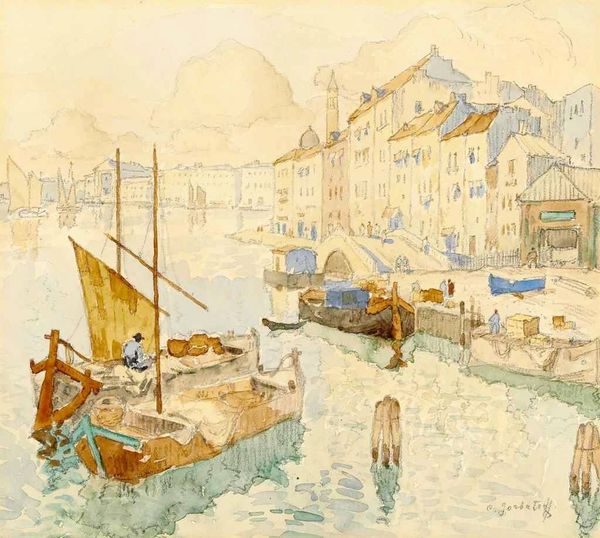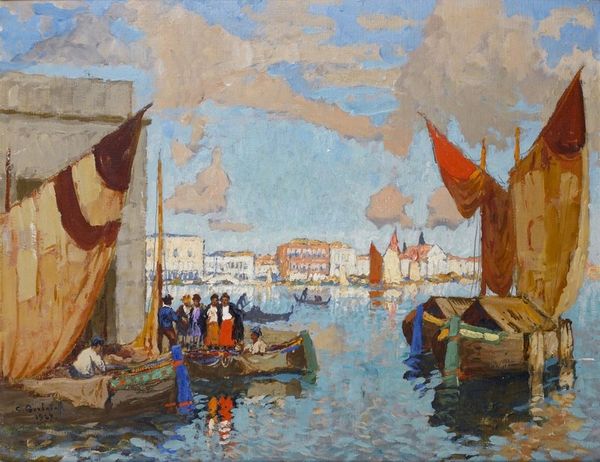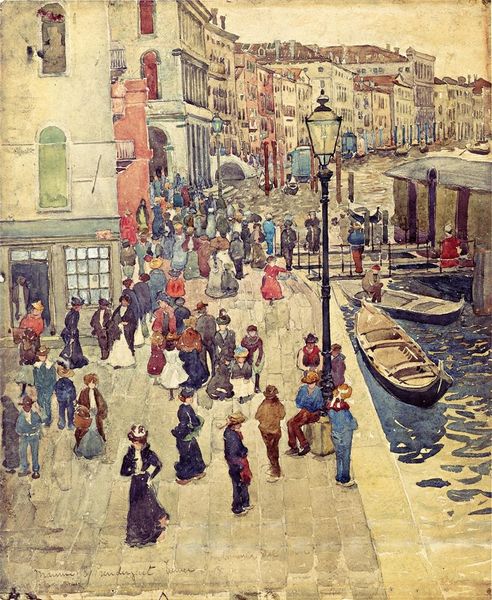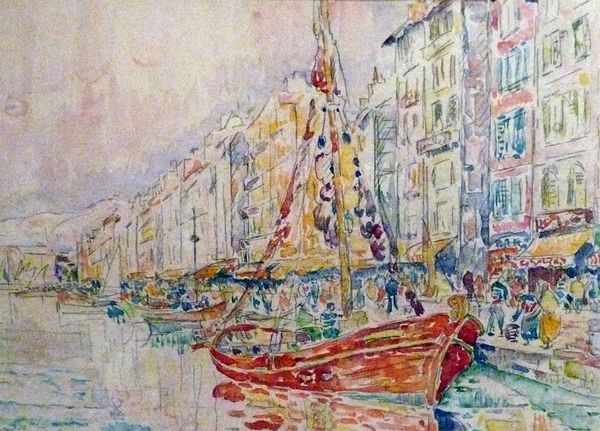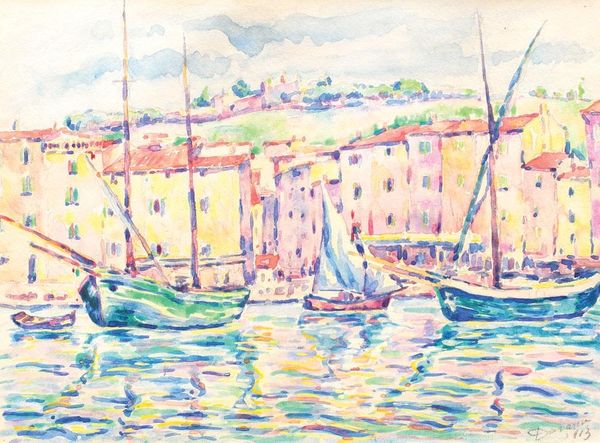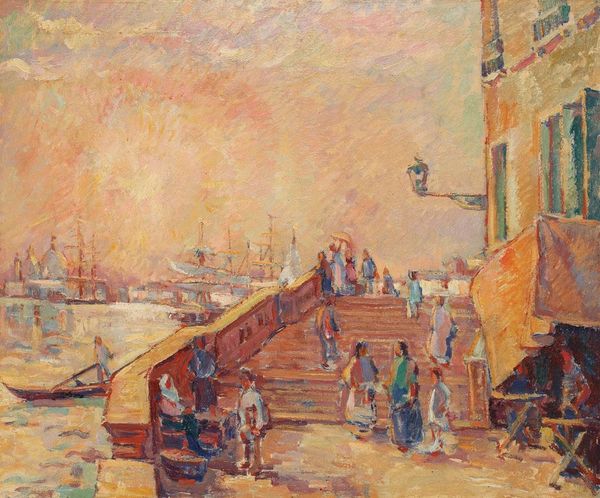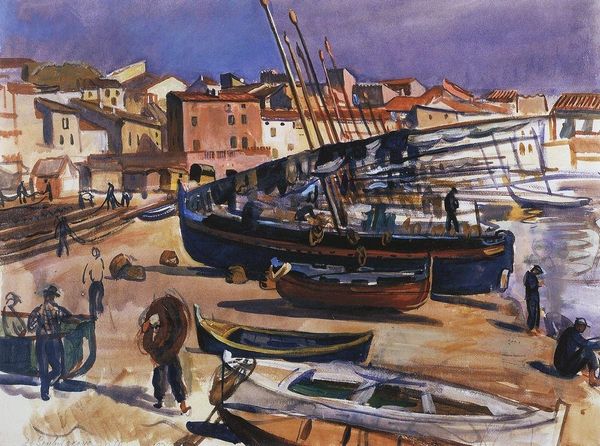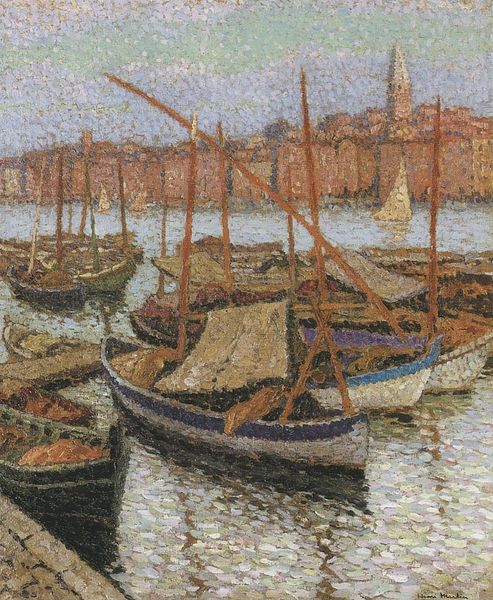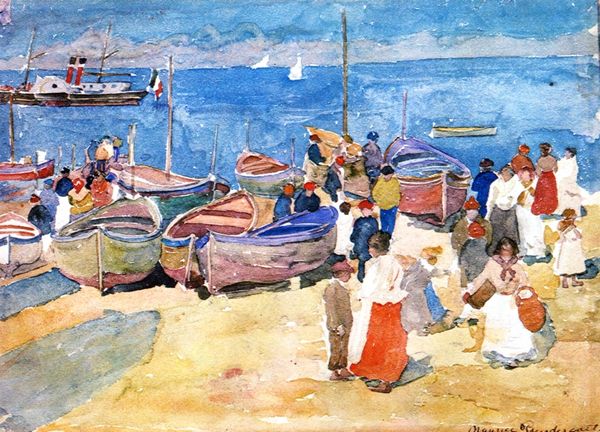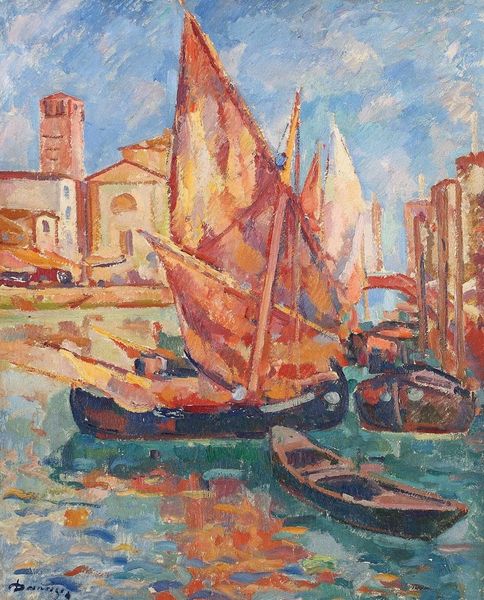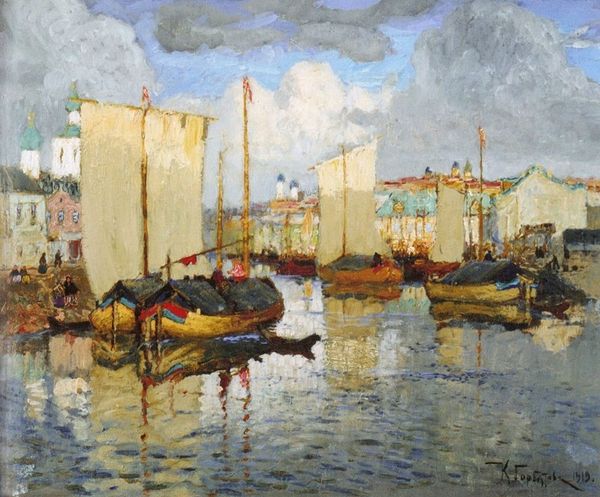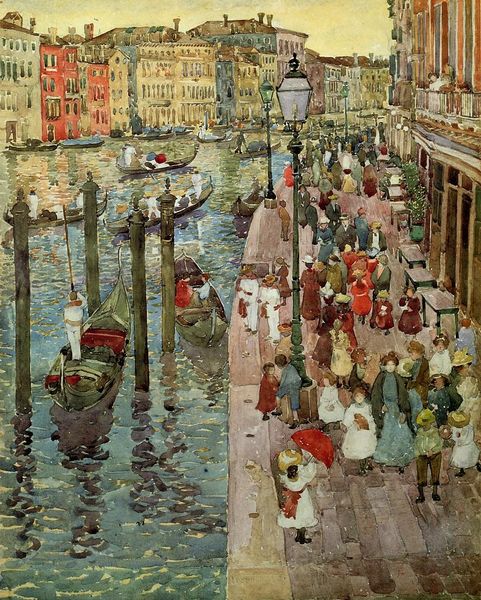
Dimensions: 73.7 x 91.4 cm
Copyright: Public domain
Editor: Here we have Maximilien Luce’s "Le Port de Saint-Tropez," painted in 1893. It’s an oil painting absolutely shimmering with light. It’s so… pixelated, in a way. What strikes you when you look at this painting? Curator: The painting offers a snapshot of late 19th-century France, steeped in social complexities. The technique is Pointillism, but think about what Luce chooses to depict. It's not just a pretty harbor; it’s a space of labor, leisure, and commerce, all happening at once. Notice the workers and the bourgeois mingling – or not quite. What does this mixing – or separation – of social classes suggest to you about the politics of the time? Editor: I see it. The light seems almost democratic, falling equally on everyone, but you're right, they aren't interacting. It makes me wonder, was Luce making a statement about social mobility? Curator: Precisely! Luce, a known anarchist, frequently depicted working-class life with empathy, highlighting social disparities. Think of this shimmering surface as a visual metaphor. While the optical effect might seem harmonious from afar, a closer look reveals distinct, separate dots, mirroring the social divisions of the era. How does knowing about his political leanings shift your understanding of the painting's aesthetic choices? Editor: That definitely changes how I see those little dots! It makes the painting feel… sharper, more pointed, than just a pretty picture. Curator: Exactly. The port becomes a stage for social commentary, subtly critiquing the societal structures of his time through the very act of depicting them. Art isn't created in a vacuum! Editor: I hadn't considered that. I’ll definitely pay more attention to the historical context when viewing art from now on. Curator: That’s the key—seeing art as an active participant in the cultural conversations of its time.
Comments
No comments
Be the first to comment and join the conversation on the ultimate creative platform.
